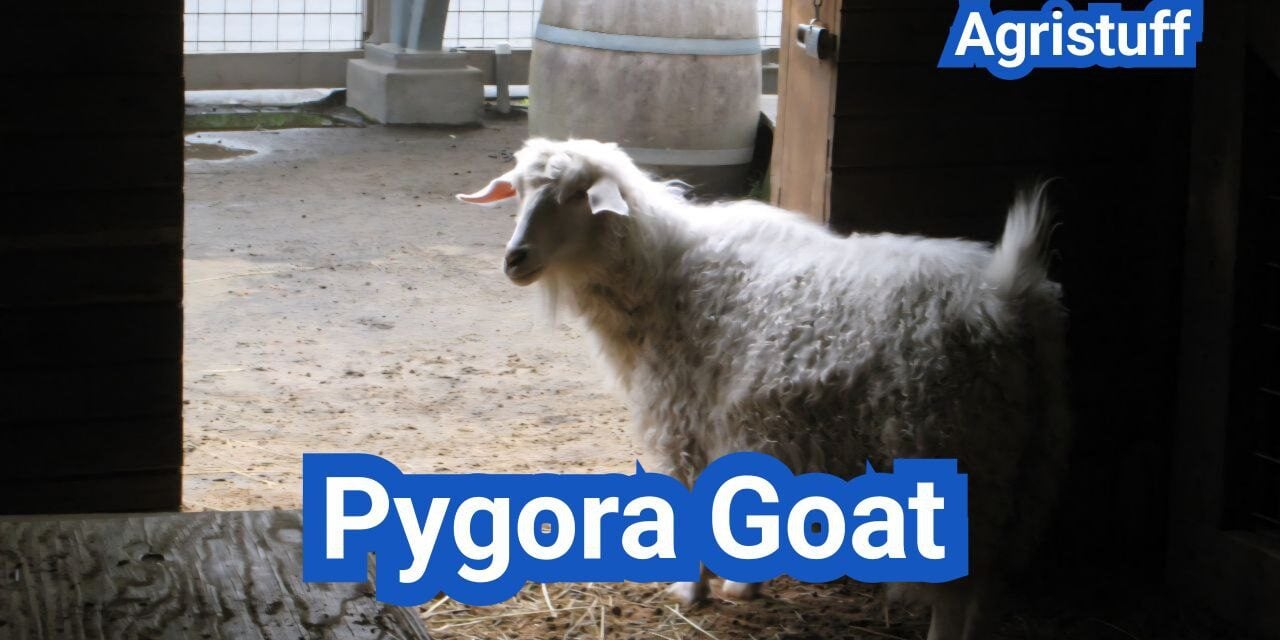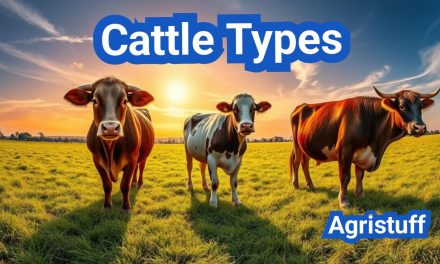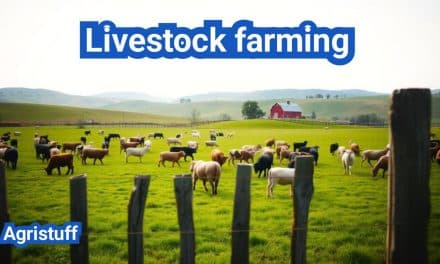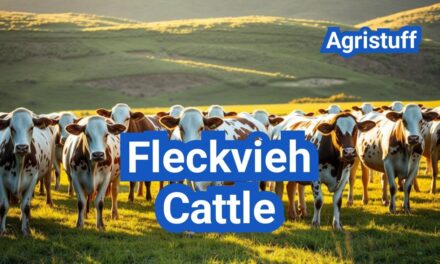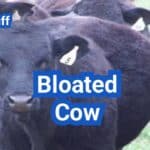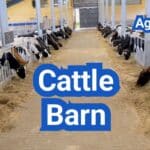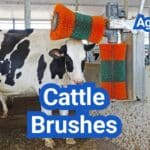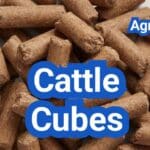The Pygora Goat is a unique breed that has gained popularity among homesteaders and fiber enthusiasts in the United States.
Developed in the 1980s by Katharine Jorgensen in Oregon City, Oregon, this breed is a cross between the Pygmy goat and the Angora goat, resulting in a goat that produces high-quality fiber.
The combination of the Pygmy and Angora goats has resulted in a versatile breed well-suited for small farms and homesteads, offering a range of benefits for farmers and crafters alike.
Key Takeaways
- Developed in the 1980s by Katharine Jorgensen
- A cross between Pygmy and Angora goats
- Produces high-quality fiber
- Ideal for small farms and homesteads
- Offers various benefits for farmers and crafters
What Is a Pygora Goat?
Pygora goats are a unique breed known for their exceptional fiber-producing capabilities. They are a cross between the Pygmy goat and the Angora goat, bred specifically for their soft, fine fleece.
Definition and Basic Information
Pygora goats are defined by their luxurious fleece, which is used to create a variety of textiles, including clothing, accessories, and home decor items. They are known for their friendly and outgoing personalities, making them a popular choice among fiber enthusiasts and hobby farmers.
The breed is recognized for its versatility, not only in fiber production but also as companions and show animals. Their fleece is highly prized for its softness and warmth, characteristics that make it ideal for hand-spinning and other fiber arts.
Development as a Fiber Breed
The development of Pygora goats as a fiber breed was a deliberate effort to combine the desirable traits of the Pygmy and Angora goats. The goal was to create a breed that could produce high-quality fiber while being adaptable to various environments.
The Pygora breed was developed by Katharine Jorgensen in the 1970s, with the aim of creating a goat that was not only a good producer of fine fiber but also had a friendly temperament. The breed has since gained popularity among fiber producers and enthusiasts.
The characteristics of Pygora goat fleece can vary, but it is generally categorized into three types based on its characteristics. Understanding these types is crucial for breeders and buyers alike.
| Fleece Type | Characteristics | Uses |
|---|---|---|
| Type A | Fine, soft, and lustrous | Ideal for hand-spinning and making fine garments |
| Type B | A mix of fine and coarse fibers | Suitable for a variety of textile projects, including hats and scarves |
| Type C | Coarser, more like guard hair | Often used for outerwear or as a durable element in textiles |
The History and Origin of Pygora Goats

In the 1980s, Katharine Jorgensen embarked on a mission to create a new breed of goat, resulting in the Pygora goat. This innovative breed was developed by crossing Pygmy goats with Angora goats, combining the desirable traits of both breeds. The goal was to create a goat that produced high-quality fiber and was well-suited for small farms and homesteads.
Creation of the Breed
The creation of the Pygora breed was a meticulous process that involved careful selection and breeding. Katharine Jorgensen’s vision was to produce a goat that not only yielded high-quality fiber but also possessed the friendly and adaptable nature of the Pygmy goat. By leveraging the characteristics of both parent breeds, Jorgensen successfully created a unique and valuable breed.
The Pygora breed quickly gained popularity among fiber enthusiasts and small-scale farmers. Its ability to thrive in various environments and its low maintenance requirements made it an attractive choice for many.
Development by Katharine Jorgensen
Katharine Jorgensen’s role in the development of the Pygora breed cannot be overstated. As a pioneer in fiber production, Jorgensen brought her expertise and passion to the breeding program. Her dedication to creating a superior breed is evident in the quality and characteristics of the Pygora goat.
“The development of the Pygora breed was a labor of love, driven by a passion for creating something truly unique and valuable.”
Jorgensen’s work laid the foundation for the Pygora Breeders Association, which was established to promote and register the breed. Today, the Pygora goat is recognized for its exceptional fiber production and is cherished by breeders and crafters alike.
The history of the Pygora goat is a testament to the power of innovative breeding and the importance of preserving heritage breeds. As the breed continues to evolve, its origins and the contributions of Katharine Jorgensen remain an integral part of its identity.
Physical Characteristics of Pygora Goats
The physical characteristics of Pygora goats play a significant role in their appeal as a fiber-producing breed. These goats are known for their medium size, sturdy build, and a variety of coat colors.
Size and Weight
Pygora goats are characterized by their compact size. Does typically weigh between 80-120 pounds, while bucks weigh between 75-140 pounds. This medium size makes them manageable for many breeders and suitable for a variety of environments.
Colors and Markings
Pygora goats come in a diverse range of colors, including white, black, gray, and various shades in between. They may also exhibit distinctive markings on their coats, adding to their visual appeal. The variety in color and pattern makes each Pygora goat unique.
Body Structure and Conformation
Pygora goats have a sturdy build and a well-balanced body structure. Their conformation is typically compact, with a deep chest and a strong back. This physical structure supports their overall health and fiber production capabilities.
Horns and Facial Features
Some Pygora goats may have horns, which are usually smaller and less pronounced than those found in other breeds. Their facial features are typically gentle, with a straight or slightly convex profile. The facial expression of Pygora goats is often described as friendly and approachable.
| Characteristic | Description |
|---|---|
| Size | Medium |
| Weight (Does) | 80-120 pounds |
| Weight (Bucks) | 75-140 pounds |
| Colors | White, Black, Gray, Various Shades |
| Body Structure | Compact, Sturdy Build |
In summary, Pygora goats are distinguished by their medium size, diverse coat colors, and sturdy build. These physical characteristics, along with their friendly demeanor, make them a popular choice among breeders and fiber enthusiasts.
Understanding Pygora Goat Fleece Types

Understanding the different types of fleece produced by Pygora goats is crucial for breeders and enthusiasts alike. Pygora goats are known for their high-quality fleece, which is categorized into three main types: Type A, Type B, and Type C.
Type A Fleece Characteristics
Type A fleece is characterized by its long and lustrous fibers, often compared to mohair. This type of fleece is highly valued for its length and sheen, making it ideal for producing high-quality yarn and textiles.
Type B Fleece Characteristics
Type B fleece is a blend of the Pygmy goat undercoat and the Angora goat mohair. It is known for its softness, crimp, and overall versatility. Type B fleece is highly prized for its warmth, lightweight properties, and is often used in crafting soft, durable garments.
Type C Fleece Characteristics
Type C fleece is soft and fine, with a texture similar to cashmere. This fleece type is highly valued for its softness and warmth, making it ideal for producing high-end textiles and garments that require a luxurious feel.
Fiber Quality and Yield
The quality and yield of Pygora goat fleece can vary significantly depending on several factors, including the individual goat’s genetics, nutrition, and overall health. Proper care and nutrition are essential to maximize fleece quality and yield.
Key factors influencing fleece quality include:
- Genetics: The genetic makeup of the goat plays a crucial role in determining fleece type and quality.
- Nutrition: Adequate nutrition is vital for healthy fleece growth.
- Health: Regular health checks and preventative care can help maintain high fleece quality.
Pygora Goat Temperament and Behavior
Pygora goats stand out due to their exceptional temperament, which combines friendliness, intelligence, and a strong desire for interaction. This unique blend of traits makes them an excellent choice for a variety of settings, from small farms to homesteads.
Personality Traits
Pygora goats are known for their friendly and outgoing personalities. They are highly social animals that thrive on interaction with other goats and humans. Their intelligence and curiosity make them engaging companions, and they can be trained to perform a variety of tasks.
The friendly nature of Pygora goats is one of their most significant advantages. They are often used as pets and are well-suited for environments where interaction is encouraged. Their intelligence allows them to adapt to various situations, making them versatile animals for different types of management systems.
Interaction with Other Animals and Humans
Pygora goats are highly interactive animals. They not only enjoy the company of other goats but also benefit from human interaction. Regular handling from an early age can make them very tame and responsive to commands.
Their social nature means they thrive in environments where they are part of a group or herd. However, they also require adequate space to roam and exercise, making them suitable for farms or homesteads with sufficient land.
| Trait | Description | Benefit |
|---|---|---|
| Friendly Nature | Outgoing and sociable | Makes them excellent pets and companions |
| Intelligence | Highly curious and capable of learning | Easy to train for various tasks |
| Social Interaction | Thrives on interaction with humans and other goats | Encourages a strong bond between the goat and its handler |
In conclusion, the temperament and behavior of Pygora goats make them a valuable addition to many farms and homesteads. Their friendly, intelligent, and social nature provides numerous benefits, from companionship to the potential for various productive uses.
How to Set Up Housing and Fencing for Pygora Goats

Creating a safe and secure environment for Pygora goats involves careful consideration of their housing and fencing needs. Pygora goats are known for their agility and can be prone to escaping if their enclosures are not adequately designed.
Building Appropriate Shelters
Pygora goats require sturdy shelters that protect them from various weather conditions. The shelter should be well-ventilated, dry, and draft-free. It’s essential to use materials that are durable and can withstand the elements. A three-sided shelter can be an effective option, providing protection from wind and rain while allowing for airflow.
Key considerations for building shelters include:
- Using sturdy materials like wood or metal
- Ensuring adequate ventilation to prevent moisture buildup
- Providing enough space for all goats to stand comfortably
Space Requirements
Pygora goats need sufficient space to move around, exercise, and engage in natural behaviors. The recommended space per goat varies, but a general guideline is to provide at least 10 square feet per goat inside the shelter and more outdoor space for grazing and exercise.
Adequate space is crucial for the health and well-being of Pygora goats. Overcrowding can lead to stress and health issues, so it’s vital to ensure that each goat has enough room.
Effective Fencing Solutions
Fencing is a critical aspect of Pygora goat housing, as it must prevent escape and protect the goats from predators. The fencing should be at least 5 feet high, and materials like woven wire or electric fencing can be effective. It’s also important to bury the fencing a few inches underground to prevent digging escape attempts.
Effective fencing tips:
- Use sturdy posts and secure the fencing material tightly
- Consider using electric fencing for added security
- Regularly inspect the fencing for damage or weaknesses
By focusing on appropriate shelters, adequate space, and effective fencing, you can create a safe and secure environment for your Pygora goats, ensuring their health and happiness.
Feeding and Nutrition Guide for Pygora Goats

A well-balanced diet is crucial for the health and productivity of Pygora goats. Providing the right nutrients ensures that these goats thrive and produce high-quality fiber.
Daily Diet Requirements
Pygora goats require a diet rich in high-quality hay, grains, and minerals. The daily diet should include a mix of:
- High-quality hay (legume or grass hay)
- Grains (oats, barley, or corn)
- Minerals and supplements (calcium, phosphorus, and vitamins)
The exact proportions may vary depending on factors such as age, size, and productivity level.
Essential Supplements and Minerals
In addition to hay and grains, Pygora goats require essential supplements and minerals to maintain optimal health. Some key supplements include:
| Supplement | Function | Recommended Amount |
|---|---|---|
| Calcium | Bone health | 1-2% of total diet |
| Phosphorus | Energy production | 0.5-1% of total diet |
| Vitamin D | Bone health and immune function | 1000-2000 IU/kg of feed |
Water Requirements and Management
Adequate water supply is critical for the health and productivity of Pygora goats. Ensure that clean, fresh water is available at all times. The water requirements may vary depending on factors such as climate, age, and productivity level.
Tips for effective water management:
- Ensure access to clean water at all times
- Monitor water quality regularly
- Provide adequate water containers or troughs
Health Care and Management of Pygora Goats

The health care of Pygora goats involves several key practices that are essential for maintaining their overall well-being and productivity. Pygora goats are generally hardy, but like all animals, they can be susceptible to certain health issues.
Preventative Health Measures
Preventative health measures are crucial in maintaining the health of Pygora goats. Regular vaccinations against diseases such as CDT (Clostridium perfringens type C and D and Tetanus) are vital. Additionally, providing a clean living environment and ensuring access to fresh water and nutritious food helps prevent many health issues.
Regular veterinary check-ups are also important for early detection and treatment of potential health problems. Hoof trimming is another essential practice to prevent lameness and hoof rot.
Common Health Issues and Treatment
Pygora goats can be prone to certain health issues, including parasites and respiratory problems. Internal parasites such as worms can be a significant problem, and regular deworming is necessary to control infestations.
Respiratory diseases can also affect Pygora goats, especially in poorly ventilated living conditions. Ensuring good ventilation in shelters and providing a stress-free environment can help mitigate these issues.
Parasite Control Methods
Effective parasite control is critical for the health of Pygora goats. This includes regular deworming using appropriate medications, as well as practices like rotational grazing to reduce parasite loads on pastures.
Monitoring for signs of parasite infestation, such as weight loss, diarrhea, or anemia, is also crucial. Fecal exams can help determine the presence of parasites and guide treatment decisions.
By implementing these health care and management practices, Pygora goat breeders can help ensure the health and productivity of their animals, contributing to successful fiber production and overall farm health.
How to Breed Pygora Goats Successfully

To breed Pygora goats effectively, one must consider several critical factors, including the selection of breeding stock and the management of the kidding process. Breeding Pygora goats is a complex process that requires a deep understanding of their reproductive cycles, genetic traits, and specific needs.
Selecting Breeding Stock
Selecting high-quality breeding stock is the foundation of a successful Pygora goat breeding program. Breeders should look for animals with desirable traits such as good fleece quality, robust health, and a temperament suitable for handling. The Pygora Breeders Association provides guidelines for evaluating breeding stock, emphasizing the importance of genetic diversity and adherence to breed standards.
When selecting breeding stock, it’s essential to consider the fleece type, as Pygora goats can have Type A, Type B, or Type C fleece. Type A fleece is characterized by its fineness and softness, while Type B fleece is longer and more lustrous. Type C fleece, on the other hand, is more like cashmere and is highly valued for its softness and warmth.
| Fleece Type | Characteristics | Desirability |
|---|---|---|
| Type A | Fine, soft, dense | High |
| Type B | Longer, lustrous | High |
| Type C | Soft, cashmere-like | High |
Breeding Age and Season
Pygora goats are typically bred in the spring or fall, with a gestation period of around 150 days. Does usually reach breeding age at about 1-2 years old, depending on their development and health. Breeding during the optimal season ensures that kids are born during favorable weather conditions, enhancing their survival chances.
“The timing of breeding is crucial. Breeders should plan carefully to ensure that does are bred during the optimal season, taking into account factors like nutrition and health.” – Katharine Jorgensen, Pygora Breeder
Gestation and Kidding Process
The gestation period for Pygora goats is approximately 150 days. During this time, it’s crucial to provide does with proper nutrition and care to ensure a healthy pregnancy. As kidding approaches, breeders should be prepared for the birthing process, having necessary supplies and knowledge to handle any complications that may arise.
Does typically give birth to twins or triplets, so preparations should be made accordingly. Monitoring the health of both the doe and the kids during and after kidding is vital.
Kid Care and Management
Proper care and management of kids are essential for their health and development. This includes ensuring they receive adequate colostrum, are monitored for health issues, and are provided with appropriate nutrition as they grow. Regular vaccinations and parasite control measures are also critical components of kid care.
By carefully managing these aspects, breeders can enhance the quality and health of their Pygora goat herd, contributing to the success of their breeding program.
Shearing and Harvesting Pygora Goat Fiber

The art of shearing Pygora goats is nuanced, involving a deep understanding of the goats’ fleece types and the optimal timing for shearing. Shearing is a critical aspect of managing Pygora goats, directly influencing the quality and quantity of their fiber.
Optimal Shearing Schedule
Pygora goats typically require shearing twice a year. The exact timing depends on the individual goat’s fleece type and the climate. For instance, goats with Type A fleece may need more frequent shearing than those with Type C.
| Fleece Type | Shearing Frequency | Climate Considerations |
|---|---|---|
| Type A | Every 6 months | More frequent in warmer climates |
| Type B | Every 8-12 months | Variable, depending on temperature and humidity |
| Type C | Every 12 months | Less frequent shearing needed, regardless of climate |
Step-by-Step Shearing Techniques
Shearing Pygora goats requires skill and patience. Here’s a step-by-step guide:
- Prepare the goat by ensuring it is clean and dry.
- Use appropriate shearing equipment, such as sharp shears or clippers.
- Section the fleece into manageable parts to avoid matting.
- Shear in small, gentle strokes, working from the neck down to the legs.
- Inspect the goat after shearing to ensure no areas were missed.
As Katharine Jorgensen, a renowned expert in Pygora goats, once said, “The quality of the fleece is directly related to the care taken during shearing.”
This quote highlights the importance of careful handling during the shearing process.
Processing and Storing Pygora Fiber
After shearing, the fiber must be processed and stored correctly to maintain its quality. This involves:
- Sorting the fleece into different grades based on quality and color.
- Cleaning the fiber gently to remove dirt and debris.
- Carding or combing the fiber to align the fibers.
- Storing the processed fiber in a cool, dry place, away from direct sunlight.
By following these steps, Pygora goat breeders can ensure their fiber is of the highest quality, suitable for hand-spinning and other textile applications.
Multiple Uses of Pygora Goats
Pygora goats are known for their versatility, offering a range of benefits to farmers and hobbyists alike. Their unique characteristics make them suitable for various purposes, from fiber production to companionship.
Fiber Production and Crafting
Pygora goats are renowned for their high-quality fiber, which is highly prized by hand-spinners and fiber artists. The fleece of Pygora goats can be used to create a variety of products, including hats, scarves, and sweaters. The fiber comes in different types, each with its own characteristics, making it versatile for various crafting projects.
The process of harvesting and processing Pygora fiber involves shearing, sorting, and cleaning the fleece. This labor-intensive process is rewarded with a high-quality product that can be sold or used personally.
- Pygora fiber is lightweight and warm, making it ideal for winter clothing.
- The fleece can be dyed in various colors, offering a range of creative possibilities.
- Pygora fiber products are highly valued for their softness and durability.
Milk Production and Benefits
In addition to their fiber, Pygora goats can also be used for milk production. The milk from Pygora does is rich in nutrients and can be used to make cheese, butter, and other dairy products. The milk production aspect of Pygora goats adds to their value as a dual-purpose breed.
Pygora goat milk is known for its nutritional benefits, including high levels of certain vitamins and minerals. It can be consumed directly or used in various dairy products, making it a valuable resource for those interested in self-sufficiency.
Pygora goat milk is a nutritious alternative to traditional dairy sources.
Companionship and Show Animals
Pygora goats are also valued for their friendly and outgoing personalities, making them excellent companions. They are social animals that thrive on interaction, whether with humans or other goats. This trait makes them a great choice for those looking for a pet or show animal.
The breed’s temperament and appearance also make them suitable for showing. Pygora goats can be trained to be led and presented in a show ring, where they are judged on their conformation, fiber, and overall condition.
Overall, the multiple uses of Pygora goats make them a valuable addition to any farm or homestead. Whether for fiber production, milk, or companionship, Pygora goats offer a range of benefits that can enhance the lives of those who raise them.
Comparing Pygora Goats to Other Fiber Breeds

Pygora goats are often compared to other popular fiber breeds, including Angora and Pygmy goats, due to their unique characteristics. The comparison is crucial for fiber enthusiasts and breeders looking to choose the best breed for their needs.
Pygora vs. Angora Goats
One of the primary comparisons made is between Pygora and Angora goats. While both breeds are known for their fiber production, there are significant differences. Angora goats are generally larger and produce a single type of fleece, whereas Pygora goats are smaller and can produce a variety of fleece types. This diversity in fleece type makes Pygora goats appealing to a wide range of fiber artists.
Pygora goats offer a more varied fleece type compared to Angora goats, which can be an advantage for those looking for different fiber characteristics. Additionally, Pygora goats are known for their friendly and adaptable nature, making them easier to manage for many breeders.
Pygora vs. Pygmy Goats
Another comparison is between Pygora and Pygmy goats. Pygmy goats are known for their compact size and hardy nature, but they are not primarily raised for their fiber. In contrast, Pygora goats were bred specifically for their fiber quality, resulting in a higher yield and better quality fiber. While Pygmy goats can be used for fiber production, their fleece is generally not as fine or as abundant as that of Pygora goats.
The higher quality and quantity of fiber from Pygora goats make them a preferred choice for serious fiber producers. Moreover, Pygora goats come in a wider range of colors, offering more options for breeders and fiber artists.
Advantages of Choosing Pygora Goats
So, what are the advantages of choosing Pygora goats over other fiber breeds? For starters, their diverse fleece types and high-quality fiber make them ideal for a variety of fiber arts projects. Additionally, their friendly and manageable nature makes them suitable for breeders of all experience levels.
- Pygora goats offer a range of fleece types, catering to different fiber needs.
- Their smaller size compared to Angora goats can be advantageous for smaller farms or homesteads.
- Their fiber quality surpasses that of Pygmy goats, making them a better choice for serious fiber production.
In conclusion, when comparing Pygora goats to other fiber breeds like Angora and Pygmy goats, their unique characteristics, diverse fleece types, and high-quality fiber make them an attractive choice for both fiber enthusiasts and breeders.
How to Buy and Raise Pygora Goats

Buying Pygora goats requires careful consideration and research to ensure you’re getting high-quality animals. Whether you’re a seasoned farmer or a beginner, understanding the process of purchasing and raising Pygora goats is essential for a successful experience.
Finding Reputable Breeders in the USA
To start your Pygora goat journey, it’s crucial to find reputable breeders in the USA. You can begin by:
- Visiting the Pygora Breeders Association (PBA) website to find registered breeders
- Attending agricultural shows and events where Pygora goats are showcased
- Networking with other farmers and breeders through online forums and social media groups
Reputable breeders will provide healthy, well-cared-for animals and be transparent about the goat’s history, breeding, and health.
What to Look for When Purchasing
When purchasing Pygora goats, there are several factors to consider:
- Quality and Conformation: Look for goats with good body structure and fleece quality.
- Health: Ensure the goats are healthy and have been properly vaccinated.
- Breeding: Understand the goat’s pedigree and breeding history.
- Age: Consider the age of the goat and its suitability for your needs.
It’s also essential to ask the breeder about their breeding program, health guarantees, and any support they offer to new owners.
Average Costs and Investment Planning
The cost of Pygora goats can vary significantly based on factors like quality, breeding, and age. On average, you can expect to pay:
| Category | Average Price Range |
|---|---|
| Pets or Companion Goats | $200-$500 |
| Breeding Quality Goats | $500-$1,500 |
| Show Quality Goats | $1,500-$3,000+ |
In addition to the initial purchase price, consider the ongoing costs of feeding, veterinary care, and equipment. Proper investment planning will help ensure the long-term success of your Pygora goat venture.
The Pygora Breeders Association and Registration Process
The Pygora Breeders Association is a non-profit organization dedicated to preserving and promoting the Pygora goat breed.
The Pygora Breeders Association (PBA) provides a registry for Pygora goats, which helps to ensure the breed’s integrity and promote its development. By registering their goats with the PBA, breeders can benefit from a range of services and support.
Role and Benefits of the PBA
The PBA plays a crucial role in promoting the Pygora goat breed, providing education and resources to breeders, and maintaining the breed’s integrity through its registry.
Some of the key benefits of joining the PBA include:
- Access to a network of experienced breeders
- Opportunities for breed promotion and marketing
- Education and resources on best breeding practices
- Registry services to ensure the breed’s integrity
How to Register Your Pygora Goats
Registering your Pygora goats with the PBA is a straightforward process that involves several steps.
To register your goats, you will need to provide detailed information about their breeding, including their pedigree and fleece type.
| Registration Requirements | Description |
|---|---|
| Pedigree Information | Details about the goat’s ancestry and breeding |
| Fleece Type | Classification of the goat’s fleece (Type A, B, or C) |
| Breeder Information | Details about the breeder, including their contact information |
By registering your Pygora goats with the PBA, you can help to promote the breed and ensure its integrity, while also gaining access to a range of benefits and resources.
At The End of: Pygora Goat Breed
The Pygora goat breed is a unique and versatile breed that offers numerous benefits to breeders and fiber enthusiasts. With their high-quality Pygora goat fiber, friendly personalities, and compact size, Pygora goats are an ideal choice for small farms and homesteads.
Whether you’re a seasoned breeder or just starting out, the Pygora goat is definitely worth considering for its exceptional fiber production and gentle nature. As a breed developed by Katharine Jorgensen, Pygora goats have gained popularity for their soft fleece and manageable size.
For those interested in raising Pygora goats, understanding their history, characteristics, and care requirements is essential. By exploring the various aspects of Pygora goat breeding, owners can maximize the potential of these remarkable animals and enjoy the rewards of working with this exceptional pygora goat breed.
FAQ
What is a Pygora goat?
A Pygora goat is a cross between a Pygmy goat and an Angora goat, developed for its high-quality fiber and friendly personality.
What are the different types of Pygora goat fleece?
Pygora goats produce three distinct types of fleece: Type A, which is long and lustrous; Type B, which is a blend of the Pygmy goat undercoat and Angora goat mohair; and Type C, which is soft and fine with a cashmere-like texture.
How often should I shear my Pygora goats?
The optimal shearing schedule for Pygora goats depends on the individual goat’s fleece type and climate, but typically involves shearing twice a year.
What are the benefits of raising Pygora goats?
Pygora goats offer several benefits, including high-quality fiber, milk production, and companionship, making them a versatile and valuable addition to small farms and homesteads.
How do I care for Pygora goat kids?
Proper care and management of Pygora goat kids involves ensuring they receive adequate nutrition, vaccinations, and parasite control measures, as well as providing a safe and healthy environment.
Can Pygora goats be used for milk production?
Yes, Pygora goats can be used for milk production, with does producing a rich and nutritious milk.
How much do Pygora goats cost?
The average cost of Pygora goats can vary depending on factors such as the individual goat’s quality, breeding, and conformation, as well as the breeder’s reputation and location.
How do I register my Pygora goats with the Pygora Breeders Association?
To register your Pygora goats with the Pygora Breeders Association, you will need to follow the registration process outlined by the organization, which includes providing documentation and meeting specific breed standards.
What are the advantages of registering my Pygora goats?
Registering your Pygora goats with the Pygora Breeders Association can provide several benefits, including breed promotion and education, as well as access to a network of experienced breeders.
How do I feed my Pygora goats?
Pygora goats require a balanced diet that includes high-quality hay, grains, and minerals, as well as access to clean water.
What are the common health issues in Pygora goats?
Pygora goats can be prone to certain health issues, including parasites and respiratory problems, which can be managed with regular preventative care and prompt treatment.
How do I house and fence my Pygora goats?
Pygora goats require sturdy housing and fencing to protect them from predators and prevent escape, and should be provided with adequate space and shelter.
Conclusion of: Pygora Goat Breed
Introduction to the Pygora Goat
The Pygora Goat is a uniquely American fiber goat breed that blends the compact size of the Pygmy goat with the luxurious fleece of the Angora goat, creating a small, friendly animal that produces premium fiber for hand spinners.
Designed from the beginning as a specialty fiber animal, the Pygora Goat offers fine, soft fleece, a manageable body size, and a gentle temperament that suits families, homesteaders, and small farms across the United States. For many hobby farmers, the Pygora Goat is an ideal first fiber animal because it combines ease of handling with a fleece that can be spun into yarn suitable for garments, accessories, and high-end craft projects. Pygora Goat breed overview – Cooperative Extension
History and Origin of the Pygora Goat
The modern Pygora Goat was developed in the 1980s in Oregon by Katharine Jorgensen, a breeder and 4-H judge who was deeply involved with the National Pygmy Goat Association and also passionate about spinning fiber. By crossing Pygmy goats, which carry a dense, cashmere-like undercoat, with Angora goats known for their long, lustrous mohair, she intentionally created the Pygora Goat as a dedicated fiber-producing breed. In 1987, the Pygora Breeders Association (PBA) was founded to establish a herdbook, maintain registration records, and define breed standards so that every registered Pygora Goat can trace its lineage to recognized Angora and Pygmy parents.
Today, the PBA protects the Pygora® name and ensures that animals labeled as Pygora Goat meet specific conformation and fleece criteria, preserving the breed’s quality and reputation in U.S. fiber markets. History and background of the Pygora Goat – Dakota Pygoras
Physical Characteristics and Size of the Pygora Goat
The Pygora Goat is a small to medium-sized animal, which makes it very attractive for U.S. homesteads and hobby farms with limited acreage. A typical adult Pygora Goat doe often weighs around 65–75 pounds, while bucks and wethers can reach 75–95 pounds, providing a sturdy yet easy-to-handle body size. Height standards from breed and extension references generally place mature Pygora Goat does around 18 inches or more at the withers, and bucks somewhat taller, as long as they conform to the breed’s overall proportional and structural guidelines.
The Pygora Goat can appear in a wide variety of colors, including white, black, brown, caramel, gray, and combinations or patterns, offering fiber artists a beautiful natural color palette straight from the animal without needing to dye. Pygora Goat size and characteristics – Sand Creek Farm
Fleece Types and Fiber Quality in the Pygora Goat
The fleece of the Pygora Goat is its most distinctive feature, and the breed is recognized for three main fleece types—A, B, and C—each with its own texture and best uses. Type A Pygora Goat fleece more closely resembles fine mohair: it is long, lustrous, and often curly or ringleted, usually grown to several inches in length and excellent for shiny yarns or locks.
Type B Pygora Goat fleece represents a blend of mohair and cashmere qualities, resulting in a 3–6 inch, crimpy, versatile fiber that can be spun into a wide variety of yarns suitable for garments and accessories. Type C Pygora Goat fleece is shorter, often 1–3 inches, but very fine and soft, sometimes approaching commercial cashmere in feel, making it ideal for next-to-skin projects when processed carefully. Pygora Goat fiber types and standards – Pygora Breeders Association
Temperament and Behavior of the Pygora Goat
Beyond fiber quality, many owners value the Pygora Goat for its friendly and engaging temperament, which fits well into family environments and youth livestock programs across the United States. With regular, gentle handling, the Pygora Goat often becomes people-oriented, curious, and cooperative, making chores like hoof trimming, shearing, and veterinary checks much easier.
Because the Pygora Goat is smaller than many dairy or meat breeds, it is usually less intimidating for children, first-time owners, and older adults who want a responsive but manageable farm companion. These traits help the Pygora Goat thrive in roles such as 4-H projects, petting zoos, farm tours, and educational programs that introduce visitors to sustainable fiber production. Pygora Goat behavior and handling notes – UMass CAFE
Housing and Fencing Needs for the Pygora Goat
Even though it is small, the Pygora Goat still requires appropriate housing and fencing to stay healthy and safe in different U.S. climates. Each Pygora Goat should have a dry, draft-free shelter that protects it from wind, rain, and snow in winter, along with adequate shade and ventilation for hot summer conditions.
Good management practice includes using well-drained flooring, clean bedding such as straw or shavings, and regular removal of soiled material so that the Pygora Goat does not stand in damp or dirty areas that could invite hoof and skin problems. Fencing for a Pygora Goat herd is often made from woven wire, goat panels, or other sturdy materials at a height and spacing that prevent jumping and head entrapment, especially if some Pygora Goat individuals retain horns. Goat housing and fencing resources – OSU Small Farms
Feeding and Nutrition for a Pygora Goat Herd
Like other small ruminants, the Pygora Goat depends on a diet built around good-quality forage, and nutrition has a direct impact on growth, health, and fleece quality. On most U.S. small farms, a Pygora Goat herd thrives on pasture and grass hay as the primary feed, with the option of legume hay or carefully measured grain for growing kids, lactating does, and animals in intensive fiber production. It is essential that every Pygora Goat has constant access to clean, fresh water and a free-choice mineral formulated specifically for goats, because mineral imbalances can compromise both health and fiber.
Owners should monitor body condition scores regularly and adjust feed levels so that each Pygora Goat maintains a healthy weight without becoming either overly thin, which reduces productivity, or overly fat, which can lead to health problems. Goat nutrition basics – Cooperative Extension
Health Care and Routine Management of the Pygora Goat
A sound health program is vital for keeping every Pygora Goat in the herd active and productive over many years. Routine hoof trimming is one of the most important tasks, because the Pygora Goat, like all goats, can develop painful lameness if hooves become overgrown or uneven. Internal parasite control is another key area: a targeted deworming strategy based on fecal testing, pasture rotation, and veterinary guidance helps reduce resistance and keeps each Pygora Goat in good condition.
Preventive vaccinations against common diseases, access to clean water, proper sanitation in barns and pens, and prompt treatment of injuries or skin issues all contribute to the long-term well-being of the Pygora Goat and help protect the quality of its valuable fleece. Fiber goat health and management – OSU Extension
Breeding and Reproduction in the Pygora Goat
When managed carefully, the Pygora Goat is considered a relatively easy breeder, which makes it a practical choice for small U.S. farms planning to grow or maintain their herds. Like most goats, the Pygora Goat is seasonally polyestrous, and does typically cycle every 18–23 days during the breeding season, with an average gestation length of about 145–153 days.
Many breeders aim for one kidding per year per Pygora Goat doe, timing breeding so that kids arrive in favorable weather and adjusting nutrition in late gestation and early lactation. A healthy Pygora Goat buck can service multiple does, but good breeding management includes avoiding overuse of individual bucks, tracking pedigrees, and selecting Pygora Goat parents for strong conformation, good health, and desirable fleece traits. Breeding management for the Pygora Goat – Sand Creek Farm
Fiber Harvest, Shearing and Processing for the Pygora Goat
To capture the full value of its fleece, a Pygora Goat must be shorn and handled with care at the right times of year. Many owners shear their Pygora Goat once or twice annually—often in spring and fall—taking local climate, fleece type, and management goals into account. Before shearing, it is helpful to brush or blow debris from the Pygora Goat’s coat so that the fleece stays as clean as possible, and then use quality clippers or scissors along with good restraint to avoid second cuts and accidental nicks.
After harvest, the Pygora Goat fleece is typically skirted to remove stained or matted areas, washed as needed, then dehaired, carded, or combed so that hand spinners and mills can turn it into premium yarns and fiber blends. Fleece care and shearing tips for Pygora Goat owners – Caney Fork Pygoras
Main Uses of the Pygora Goat in the United States
The primary role of the Pygora Goat is fiber production, but its versatility means it can fill several niches on American farms. Many breeders focus on selling raw Pygora Goat fleece, washed locks, roving, and yarn directly to hand spinners and fiber artists who appreciate the softness and character of the fiber. At the same time, the Pygora Goat is a popular show animal and companion for youth organizations such as 4-H and FFA, where young exhibitors learn about responsible breeding, husbandry, and fiber marketing.
Because of its gentle nature and appealing appearance, the Pygora Goat can also play a central role in agritourism activities, farm classes, and fiber festivals, where visitors can see firsthand how fiber goats contribute to sustainable rural enterprises. Breed information and uses for the Pygora Goat – Pygora Breeders Association
Is the Pygora Goat Right for Your U.S. Small Farm or Homestead?
For many small farms and homesteads, the Pygora Goat is an excellent fit because it produces high-value fiber without requiring large acreage. Compared with larger livestock, the Pygora Goat has modest feed needs and is easier to handle, yet it still contributes meaningful products and income streams through fleece, agritourism, and breeding stock sales.
In regions where winters are cold, the Pygora Goat can be more adaptable than some fine-wool sheep, while still offering a luxurious fiber that retains fineness as the goat matures. If you already have fencing, shelter, and some experience with goats or small ruminants, adding a Pygora Goat herd can open doors to niche markets for hand-spun yarn, felted art, and premium farm-branded fiber products tailored to U.S. consumers. Comparing fiber goat options including Pygora Goat – Ask Extension (archived)
Choosing and Buying a Quality Pygora Goat
Buying a well-bred Pygora Goat starts with verifying registration and breeder reputation, especially for anyone in the United States who plans to sell breeding stock or premium fiber. The Pygora Breeders Association maintains a herdbook and a breeder directory that allow buyers to confirm that a Pygora Goat is properly registered and that its pedigree traces back to approved Pygmy and Angora ancestors.
Many reputable farms that focus on the Pygora Goat conduct health testing for conditions such as CAE and Johne’s disease, participate in scrapie programs, and provide clear health records for each animal they sell. When visiting farms, you should look for a Pygora Goat with strong conformation, a healthy body condition, sound feet and legs, clear eyes and nose, and fleece that matches the type and quality you want for your fiber goals. Example of health-tested Pygora Goat breeder – Mountain Meadow Farm
Economics of Fiber Production with the Pygora Goat
From an economic perspective, the Pygora Goat can generate a surprisingly strong return per head when fiber is marketed effectively, particularly in the U.S. hand-spinning and craft communities. Depending on genetics, management, and fleece type, a single Pygora Goat may produce anywhere from a few ounces to a couple of pounds of usable fleece per shearing, with some sources suggesting up to several pounds annually under ideal conditions.
High-quality Pygora Goat fiber, especially from fine Type B and C fleeces, often commands premium prices when sold as raw fleece, roving, or artisan yarn, especially if the farm provides good photos, stories, and consistent quality from year to year. While the Pygora Goat will not replace commercial meat or dairy breeds for bulk production, its combination of luxurious fiber, friendly disposition, and relatively low space requirements make it a valuable part of a diversified farm income strategy. Handspinning luxurious fibers including Pygora Goat – SweetGeorgia Yarns
Integrating the Pygora Goat into a Sustainable Farm System
A thoughtfully managed Pygora Goat herd can contribute more than fiber by helping maintain pastures and support sustainable land management on small U.S. farms. As natural browsers, each Pygora Goat is inclined to eat brush, weeds, and woody plants that many other grazing animals ignore, providing valuable assistance in controlling invasive or unwanted vegetation when used in rotational grazing systems.
By moving the Pygora Goat through different paddocks and combining them with other species such as sheep or cattle, farmers can use species-specific grazing habits to keep swards diverse and reduce reliance on mechanical mowing. In addition, the manure from a Pygora Goat can be composted and returned to the soil, supporting nutrient cycling and improving overall soil health as part of a closed-loop farm ecosystem. Goat breed and management overview – Cooperative Extension
Final thought
The Pygora Goat brings together the charm of the Pygmy goat and the luxurious fiber of the Angora, resulting in a small, productive animal that fits beautifully into modern U.S. homesteads and small farms.
By learning about the history, origin, fleece types, feeding, health, and breeding needs of the Pygora Goat, you can make informed decisions that support the long-term success of your herd and your fiber business. Whether you are a hand spinner seeking your own source of premium fiber, a family looking for an engaging farm project, or a small landowner developing a diversified enterprise, the Pygora Goat offers a compelling mix of practicality, beauty, and market potential. Taking time to plan housing, nutrition, and marketing before you buy will help ensure that every Pygora Goat you bring home thrives and contributes to your farm’s story for years to come. Learn more about the Pygora Goat – Cooperative Extension
Sources & References
The following resources provide additional, reliable information about the Pygora Goat, its fiber, and general goat management practices suitable for U.S. conditions.
- Goat Breeds – Pygora (Cooperative Extension)
- Pygora Breeders Association – Official site for the Pygora Goat
- Pygora Goat Shearing – UMass Center for Agriculture, Food and the Environment
- Start Your Fiber Farm with Pygora Goats – Dakota Pygoras
- Pygora Goat Breed for Fiber – Sand Creek Farm
- Tips and Tricks to Fabulous Fiber Goats – Oregon State University Extension
- Goat Nutrition – Cooperative Extension
- Goat Resources for Small Farms – OSU Extension
- Mountain Meadow Farm – Pygora Goats and Fiber
- Handspinning Luxurious Fibres – SweetGeorgia Yarns (Pygora section)
- Raising Pygora Goats – Fleece 101 – Caney Fork Pygoras
- Goat Breeds and Production Overview – Cooperative Extension

